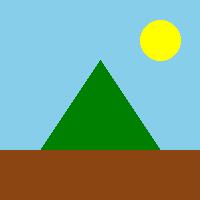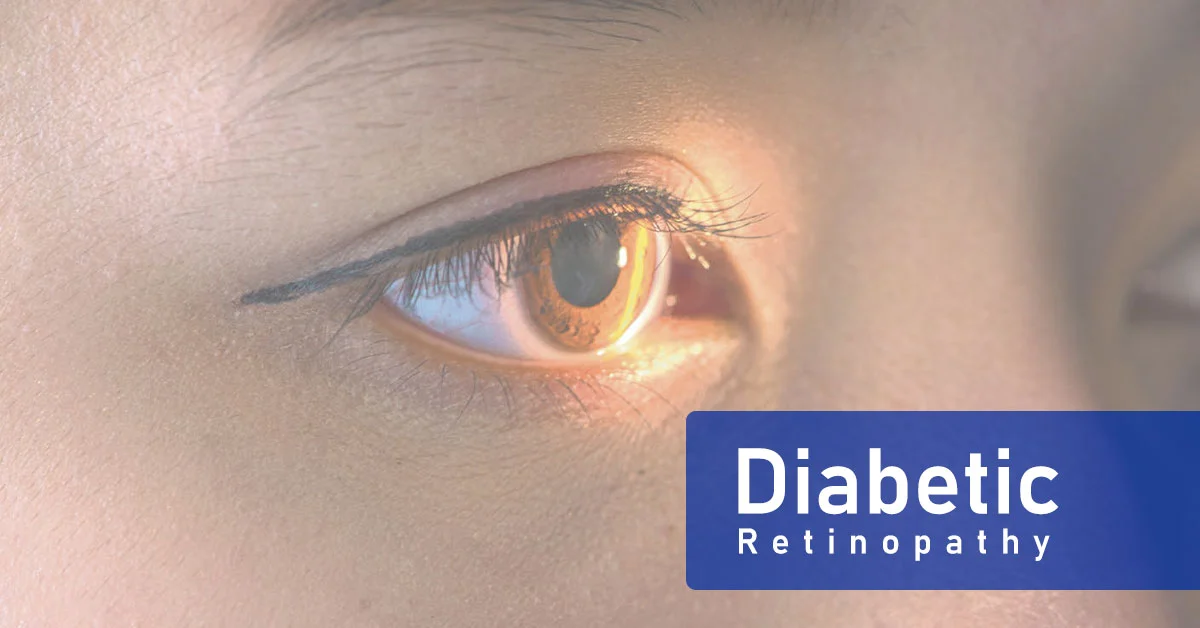What is age-related macular degeneration?
age related macular degeneration (AMD) (Figure 1) is a retinal disorder and one of the leading causes of blindness in those over the age of 50 years in the developed world1,2,3 . It affects the macula which is responsible for read, write, drive, etc. - a part of the retina responsible for sharp, central vision needed for seeing things up close, such as reading, recognizing faces, and walking safely.
The disease has no symptoms until the individual's vision effects and when the symptom arrives it is already late, i.e., the person is legally blind. Therefore, early diagnosis and prevention is the key to fight this vision threatening disease.
(Figure 1)
Figure 1. A healthy individual’s vision (left) and Late AMD patient’s vision (right).
Signs/Symptoms of Late age-related macular degeneration
The symptoms of Late age-related macular degeneration can be subtle at first. At first, you might only notice little things—like the tip of the nose on a familiar face is missing, or that you have to turn on a light in the middle of the day to see clearly. Or maybe you're having trouble driving at night. Eventually, however, these little problems can get bigger and bigger, even making it hard to read, drive, watch TV or recognize faces.(Source: National Eye Institute)
Individuals' vision suffering include distorted straight lines (like a wavy street sign), blurring and blank spots in the center of your field of vision. Although some people may see only one or two straight or wavy lines (a condition known as retinal arteriolar -scotoma), some people see many wavy lines (a condition known as metamorphopsia). The more severe the distortion, the greater the likelihood that vision will decline.
|
o Age related macular degeneration types o |
o
There are two types of AMD: "wet" and "dry." While researchers are working hard to detect AMD early and develop treatments to slow vision loss, there is no cure for the disease.
Figure 2: Dry AMD (left) and wer AMD (right).
|
o Age related macular degeneration: dry vs wet o |
o
There is a difference between dry and wet age-related macular degeneration. In fact, there are two types of wet AMD. One type results from abnormal blood vessels in the subretinal space, the area just behind the retina. Another type results from large abnormal blood vessels that grow into the vitreous and push on the retina from behind. Genetic factors may contribute to both AMD types, but neither type has been linked to a specific genetic mutation. However, certain genes do increase your risk of developing AMD.
Age-related macular degeneration (AMD) is the leading cause of blindness in older adults. Only about 10-15% of patients develop the wet form of AMD, and 5% of those diagnosed with AMD will eventually go on to develop wet AMD. While there is no cure for AMD, new research provides hope for improved treatments and even a possible cure.
|
o o |
o
Treatment for age related macular degeneration
While treatment with anti-vascular endothelial growth factor (anti-VEGF) is effective in maintaining or improving vision in the neovascular form of advanced AMD (i.e., wet AMD, causes 90% of legal blindness [4]), it does not provide a cure. It can only stop the degeneration.
The Age-Related Eye Disease Study (AREDS) showed that specific antioxidant vitamin supplementation reduces the risk of progression from intermediate-stage AMD (iAMD) to late AMD that can allow for preventative strategies [5]. Approximately 7.6% of the United States population over the age of 60 is estimated to have advanced or intermediate AMD [6].
Recent publications looking at the 10-year experiences of appropriately selected patients taking the AREDS formulation demonstrate that it is effective at slowing disease and improving visual acuity in approximately 25% of patients [7]. For this reason, large-scale identification of people at risk for late AMD is very important, which is the main focus of this proposal. Early detection can enable timely treatment (such as Photobiomodulation[8]) and Laser intervention [9], AREDS supplements or other AMD prevention strategies that may arise.
[1] AMD-Defined, "Age-Related Macular Degeneration (AMD)," Projections for AMD (2010-2030-2050), National Eye Institute (NEI), last accessed on Aug 03, 2018.
[2] C. Agurto et al., "Automatic detection of diabetic retinopathy and age-related macular degeneration in digital fundus images.," Retina, vol. 52, no. 8, pp. 5862-71, 2011.
[3] H. Bartlett and F. Eperjesi, "Use of Fundus Imaging in Quantification of Age-related Macular Change," Survey of Ophthalmology, vol. 52, no. 6, pp. 655-671, 2007.
[4] AMD-Facts-and-Figures, "Bright Focus Foundation," https://www.brightfocus.org/macular/article/age-related-macular-facts-figures (last accessed on April 03, 2019).
[5] Age-Related Eye Disease Study Research Group, "The Relationship of Dietary Carotenoid and Vitamin A, E, and C Intake With Age-Related Macular Degeneration in a Case-Control Study: AREDS Report No. 22," Arch Ophthalmol., vol. 125(9), pp. 1225-1232, 2007.
[6] National-Eye-Institute. "Prevalence of Blindness Data (http://www.nei.nih.gov/eyedata/pbd_tables.asp), Last accessed on May 30, 2013 " (accessed.
[7] E. Y. Chew, J. P. SanGiovanni, and AREDS2-Research-Group, "Lutein/Zeaxanthin for the Treatment of Age-Related CataractAREDS2 Randomized Trial Report No. 4," JAMA Ophthalmology (doi:10.1001/jamaophthalmol.2013.4412), vol. 131(7), pp. 843-850, 2013.
[8] I. I. Geneva, "Photobiomodulation for the treatment of retinal diseases: a review," Int J Ophthalmol . vol. 9(1), pp. 145–152, 2016.
[9] R. Guymer et al., "Subthreshold Nanosecond Laser Intervention in Age-Related Macular Degeneration: The LEAD Randomized Controlled Clinical Trial," Ophthalmology, vol. pii: S0161-6420(18)32135-3. doi: 10.1016/j.ophtha.2018.09.015, 2018.
Keywords :
|
o Keywords o |
o
o Search Volume (Average) o |
o
|
o age related macular degeneration o |
o
o 22200 o |
o
|
o age related macular degeneration meaning o |
o
o 6600 o |
o
|
o age related macular degeneration wet o |
o
o 2900 o |
o
|
o treatment for age related macular degeneration o |
o
o 1300 o |
o
|
o symptoms of age related macular degeneration o |
o
o 1000 o |
o
|
o age related macular degeneration icd 10 o |
o
o 880 o |
o
|
o age related macular degeneration dry o |
o
o 880 o |
o
|
o age related macular degeneration amd o |
o
o 720 o |
o
|
o age related macular degeneration dry vs wet o |
o
o 720 o |
o
|
o neovascular age-related macular degeneration o |
o
o 590 o |
o
|
o wet age related macular degeneration icd 10 o |
o
o 320 o |
o
|
o age related macular degeneration blindness o |
o
o 260 o |
o
|
o pathophysiology of age related macular degeneration o |
o
o 170 o |
o
|
o age related macular degeneration fundoscopy o |
o
o 140 o |
o
|
o age related macular degeneration types o |
o
o 90 o |
o
|
o age related macular degeneration eyewiki o |
o
o 70 o |
o
|
o exudative age-related macular degeneration bilateral icd 10 o |
o
o 70 o |
o
|
o age related macular degeneration classification o |
o
o 50 o |
o
|
o AMD o |
oo |



